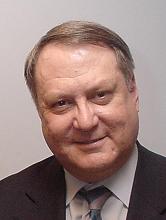By George Kane
 Since I started writing this column in 2001, I have covered litigation over the Mt. Soledad Cross many times. It has been of particular interest to me because I could see the cross from Rancho Bernardo, where I lived in the early ‘90s before I came to Minnesota. I think that we are likely no closer to a resolving the fate of the cross now than we were when I lived about 20 miles away from it.
Since I started writing this column in 2001, I have covered litigation over the Mt. Soledad Cross many times. It has been of particular interest to me because I could see the cross from Rancho Bernardo, where I lived in the early ‘90s before I came to Minnesota. I think that we are likely no closer to a resolving the fate of the cross now than we were when I lived about 20 miles away from it.
In early January, a three-judge panel of the 9th Circuit Court of Appeals ruled that the cross was still in violation of the Establishment Clause of the Constitution, even though it was now owned by the federal government rather than the county of San Diego. This overturned a 2008 trial court ruling that held that the cross was permissible because, as written by Judge Larry Alan Burns, “the memorial at Mount Soledad, including its Latin cross, communicates the primarily nonreligious messages of military service, death and sacrifice. As such, despite its location on public land, the memorial is Constitutional.”
Plaintiffs in the case include the Jewish War Veterans of the United States of America, several local residents, and the American Civil Liberties Union. Litigation began in 1989, but the case outlived the original plaintiff, Phillip K. Paulson.
The County of San Diego, the original defendant in the case, first transferred ownership of the cross itself to the Mt. Soledad Memorial Association, a private company created solely to circumvent one court ruling, and then transferred the hill-top park to the federal government to reprise that slight-of-hand when it was faced by a court order to remove the cross or pay daily fines.
But, of course, we have reached this point before in the battle to remove the cross. The appeals court returned the case to the trial court in San Diego to decide whether the cross will have to be removed, or if there is a way that it can be modified to correct the Establishment Clause violation.
In the 50-page ruling by the appeals court, Judge M. Margaret McKeown, a Clinton appointee, re-examined the history of the Soledad cross. She concluded that it remains a “predominantly religious symbol” despite efforts since the 1990s to reinvent the site by installing around the base of the cross hundreds of plaques and photographs honoring fallen soldiers.
“The history and absolute dominance of the Cross are not mitigated by the belated efforts to add less significant secular elements to the Memorial,” McKeown wrote.
The Appellate Court explained why its ruling nevertheless does not yet order the cross to be removed: “This result does not mean that the Memorial could not be modified to pass constitutional muster, nor does it mean that no cross can be part of this veterans’ memorial. We take no position on those issues.”
There are a few ways this case may develop. The trial court could order the cross to be moved, or propose remedies by which the Establishment Clause violation could be rectified. The federal government, the defendant in the case, could ask a larger panel of the appeals court to review the panel’s decision. This is unlikely because the Ninth Circuit is considered to be liberal and likely to affirm the ruling by the three judge panel. The administration could also appeal the case to the U.S. Supreme Court, to determine once and for all the fate of the cross. Cross supporters are hoping for this because the current court has demonstrated a weak interpretation of the Establishment Clause.
Or the president could instruct his Justice Department not to appeal the case and simply order the cross removed. Given Obama’s record of obeisance to the religious right, this is extremely unlikely.
Three Republican congressional representatives from San Diego County have already introduced a bill to stop the court from ordering removal of the cross. The bill, authored by Representatives Duncan Hunter, Darrell Issa and Brian Bilbray would expressly allow religious symbols that are part of military monuments. This would raise the question, of course, of whether such a law could itself withstand Establishment Clause scrutiny.

